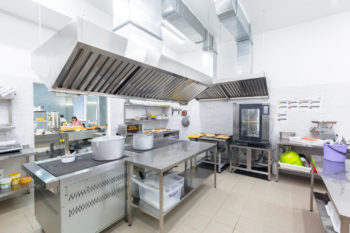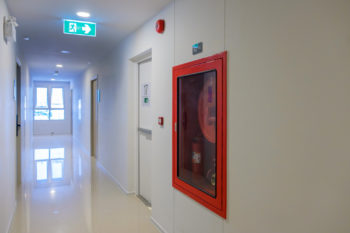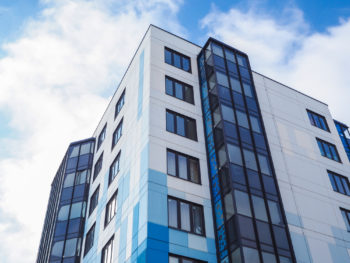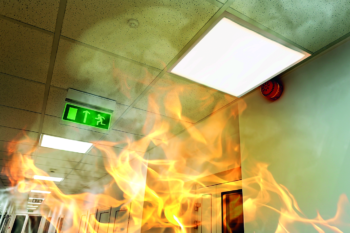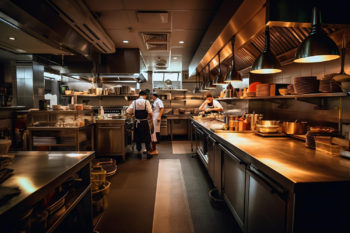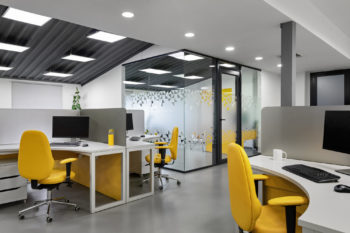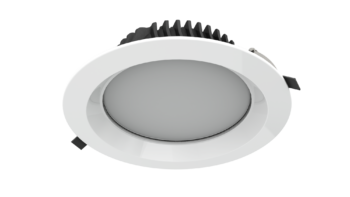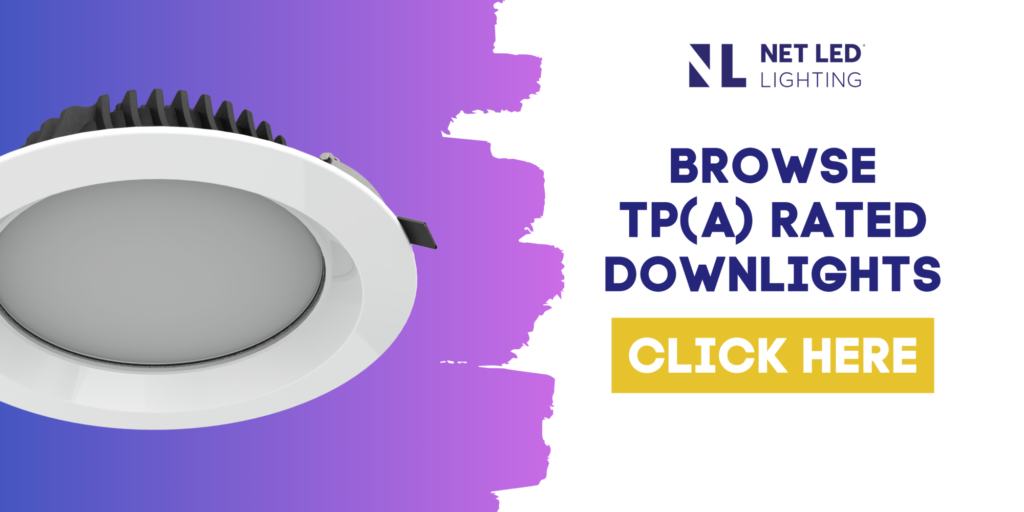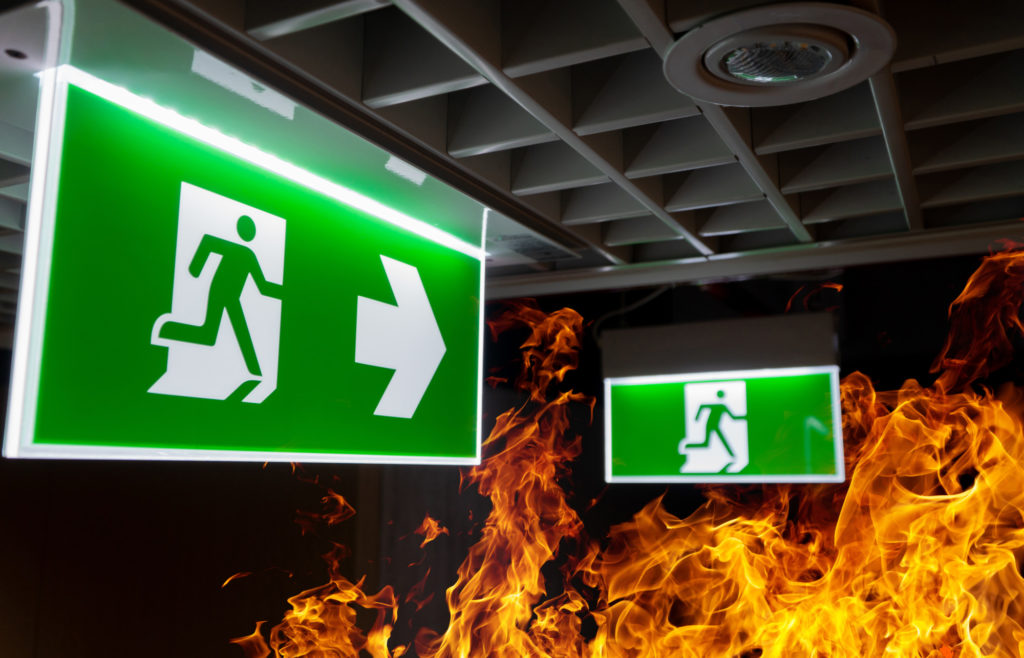
Fire Rated Downlights vs. TP(a) Flammability Rated Diffusers
20th July 2023
As a business owner, the safety of your property and those who reside or work there should be your top priority. Lighting fixtures play a significant role in the overall safety of your space, and one of the most crucial considerations when choosing lighting fixtures is their ability to fire hazards. We understand that finding the right type of fire rated fitting can be overwhelming with so many options on the market, but with our guide, you will be able to make an informed decision and choose the right products for your needs. In this blog, we’ll cover the benefits of using fire rated downlights and downlights with TP(a) or TP(b) flammability rated diffusers.
- What are fire rated downlights?
- Where should fire rated downlights be used?
- What are TP(a) and TP(b) rated downlights?
- Where should downlights with TP(a) or TP(b) flammability rated diffusers be used?
What are fire rated downlights?
Fire rated downlights are a solution for commercial and residential buildings, serving a dual purpose of illuminating spaces while offering unparalleled fire safety.
So, what exactly are fire rated downlights?
In simple terms, these lighting fixtures are specifically designed to provide an effective barrier against the spread of fire, protecting ceilings and floors from the potential risks of fire hazards. By combining efficient illumination and fire safety, these fittings have become an indispensable component in the realm of interior lighting design.
One of the primary features that make fire rated downlights an asset is their ability to effectively prevent the passage off fire through a ceiling cut-out. When installed correctly, these luminaires create a barrier that prevents the flames from entering other areas of the building, ultimately providing additional time for evacuation, and ensuring the safety of occupants. This attribute is particularly important in locations where fires are more prone to occur, such as kitchens, bathrooms, and commercial spaces.
Fire rated downlights undergo rigorous testing and must comply with specific safety standards to ensure their reliability and efficiency. They are tested to determine their ability to maintain the fire barrier for a certain duration, usually denoted by the fire rating in minutes. Higher fire ratings indicate longer periods of protection.
30 minute fire rating
These downlights provide adequate protection and delay the spread of fire for 30 minutes, which is enough time to evacuate people safely and minimise property damage.
60 minute fire rating
These downlights provide double the fire resistance of 30 minute fire rated downlights, allowing for more extended evacuation time and protection of sensitive equipment and valuable assets.
90 minute fire rating
These downlights are the most robust fire rating for any downlight, providing maximum fire resistance for 90 minutes. They provide ample time for emergency services to arrive and extinguish the fire while minimising damage to property.
Where should fire rated downlights be used?
Kitchens
A kitchen is one of the most common areas where fires occur. A fire can easily start in the kitchen due to the high heat produced by cooking appliances, and this is where fire rated downlights are most essential. The downlights are fitted with a heat-resistant shield that prevents flames from escaping through the ceiling if a fire breaks out.
Entrance and Exit Areas
Commercial buildings, especially those accommodating large gatherings or hosting numerous employees, often face a substantial risk during emergency situations. Installing fire rated downlights in entrance and exit areas helps maintain clear evacuation routes, allowing occupants to swiftly navigate to safety even in the most stressful of circumstances.
High-Rise Buildings
Fire rated downlights with a time delay such as 60 minutes or 90 minutes are ideal for high-rise buildings. This is because they give workers or residents on higher floors longer to evacuate the building in the event of a fire, reducing the risk of the fire spreading to the floor above. Downlights with shorter time delays such as 30 minutes can be appropriate for standard residential buildings or lower floors of buildings where occupants are closer to the exit and would not need as long to evacuate.
What are TP(a) and TP(b) fire rated downlights?
Technically, TP(a) and TP(b) aren’t ‘fire ratings’ and shouldn’t be confused with fire rated downlights.
Instead, they refer to a luminaire’s diffuser.
‘TP’ stands for thermoplastic, and TP materials, such as polycarbonate (PC), acrylic (PMMA) and polystyrene (PS) are commonly used as diffusers in light fittings. A TP(a) flammability rating is a flame-retardant standard that applies to materials used in buildings, including LED downlights and LED panels. It was introduced by the British Standard Institution (BSI) as a fire resistance measure. The TP(a) standard represents a very low tendency to spread flames or emit burning particles in the event of a fire.
To achieve TP(a) flammability rating, the diffuser material must meet strict standards:
- Polycarbonate diffuser must be at least 3mm thick, or
- Any other material that, when combusts, must self-extinguish within 5 seconds following the removal of the flame
On the other hand, TP(b) flammability rated materials tend to be acrylic or polystyrene, these materials can be more problematic due to being more combustible. While TP(b) rated diffusers may not be as fire-resistant as TP(a) ones, they still possess effective fire-retardant properties and contribute significantly to minimising fire risks.
They’re generally cheaper to produce and are best used in low-risk communal areas. To comply with regulations, the total area of TP(b) rated material must not exceed more than 15% of the circulation area and must have a minimum of 3m between each fitting.
To achieve TP(b) flammability rating, the standards are as follows:
- Polycarbonate diffuser must be at least 3mm thick, or
- Any other material from 1.5mm – 3mm thick that, when combusts, has a maximum rate of burning of 50mm per minute
Ensuring the safety of both individuals navigating escape routes and emergency services personnel is of paramount importance when designing buildings. TP(a) and TP(b) flammability rated diffusers provide the necessary level of fire resistance to guarantee a secure pathway for individuals evacuating a building, while also safeguarding emergency services from the potential hazards of flaming particles.
When confronted with the need to evacuate a building swiftly, people rely on escape routes to navigate to safety. However, the gravity of such a situation demands more then just clear signage and unobstructed paths. The installation of fittings with flammability rated diffusers, specifically those with TP(a) and TP(b) classifications, is crucial to create an environment that mitigates the risks posed by fire.
Firemen and other emergency personnel risk their lives to save others, making it imperative that their safety is upheld during rescue operations. By utilising fittings with TP(a) and TP(b) flammability rated diffusers, the chances of flaming particles falling onto these individuals are substantially reduced.
Where should downlights with TP(a) or TP(b) flammability rated diffusers be used?
Hospitals
One place where downlights with a TP(a) flammability rated diffusers are a must-have is in hospitals. As much as lighting is an essential aspect of the facility, the risks of fire are a significant concern. Hospitals deal with various flammable chemicals, equipment, and oxygen tanks, which are prone to accidents that could spark a fire. These LED downlights ensure that patients and medical practitioners remain safe, even in the worst-case scenarios.
Restaurants
Restaurant kitchens and storage rooms can become dangerous fire zones when the wrong lighting systems are installed. This is especially true when you factor in open flames from stoves and grills, electrical equipment, and flammable cleaning supplies. Downlights with TP(a) flammability rated diffusers can withstand higher temperatures than conventional lighting, ensuring safety in an environment prone to fire.
Offices
Offices with high occupancy levels are prone to fire, as these buildings have numerous electrical devices such as printers and computers that produce heat, increasing the likelihood of accidental ignition. In the event of a fire outbreak, evacuation routes become more challenging when lighting fails, leaving individuals stranded. With downlights that come with TP(a) flammability rated diffusers, safety is a top priority, and it will be easier for occupants to evacuate safely.
NET LED’s Caxton Downlights are a great option for such applications. Their TP(a) flammability rated diffuser will self-extinguish, minimising the spread of a flame in the event of a fire, and ensuring the building complies with Building Regulation BS 5266.
On top of this, they’re available in 3H Emergency and Self Test Emergency making sure that fire exit routes are well lit, and occupants can leave the building safely in the event of a power failure.
Available in 3”, 4”, 6” and 8”, their built-in Tri-Colour feature means the colour temperature (3000K, 4000K or 5500K) can be decided at the time of installation, and they fit most existing holes with cut-out sizes ranging from Ø90-210mm, making retrofitting a breeze.
In summary, TP(a) and TP(b) flammability rated diffusers are indispensable components within the realm of fire safety. These requirements are not mere suggestions but essential measures that must be strictly followed. By prioritising the installation of such fittings, escape routes are transformed into safe havens, granting individuals peace of mind as they navigate their way to safety. Furthermore, emergency services personnel can execute their vital tasks with enhanced security, assured that their heroic efforts will not be hindered by the danger of flaming particles.
Summary
Selecting between fire rated downlights and downlights with TP(a) or TP(b) flammability rated diffusers ultimately depends on the unique fire safety requirements and design considerations of each specific environment.
When deciding which type of downlight to go for, your priority should always be safety. Consider where the lights will be installed, what you will use the rooms for, and how they will impact the surrounding environment.
Are you looking to provide a fire barrier? In which case, 30, 60 or 90 minute fire rated downlights are your best option. Or are you simply looking to provide a safe escape route in the event of a fire? If so, look for fittings with TP(a) or TP(b) flammability rated diffusers.
If you have a project that requires compliance with Building Regulations, don’t hesitate to reach out to our team of experts with any queries or questions you might have.
Call our team now on 01223 851505 for product specifications, quick quotes, or data sheets.
